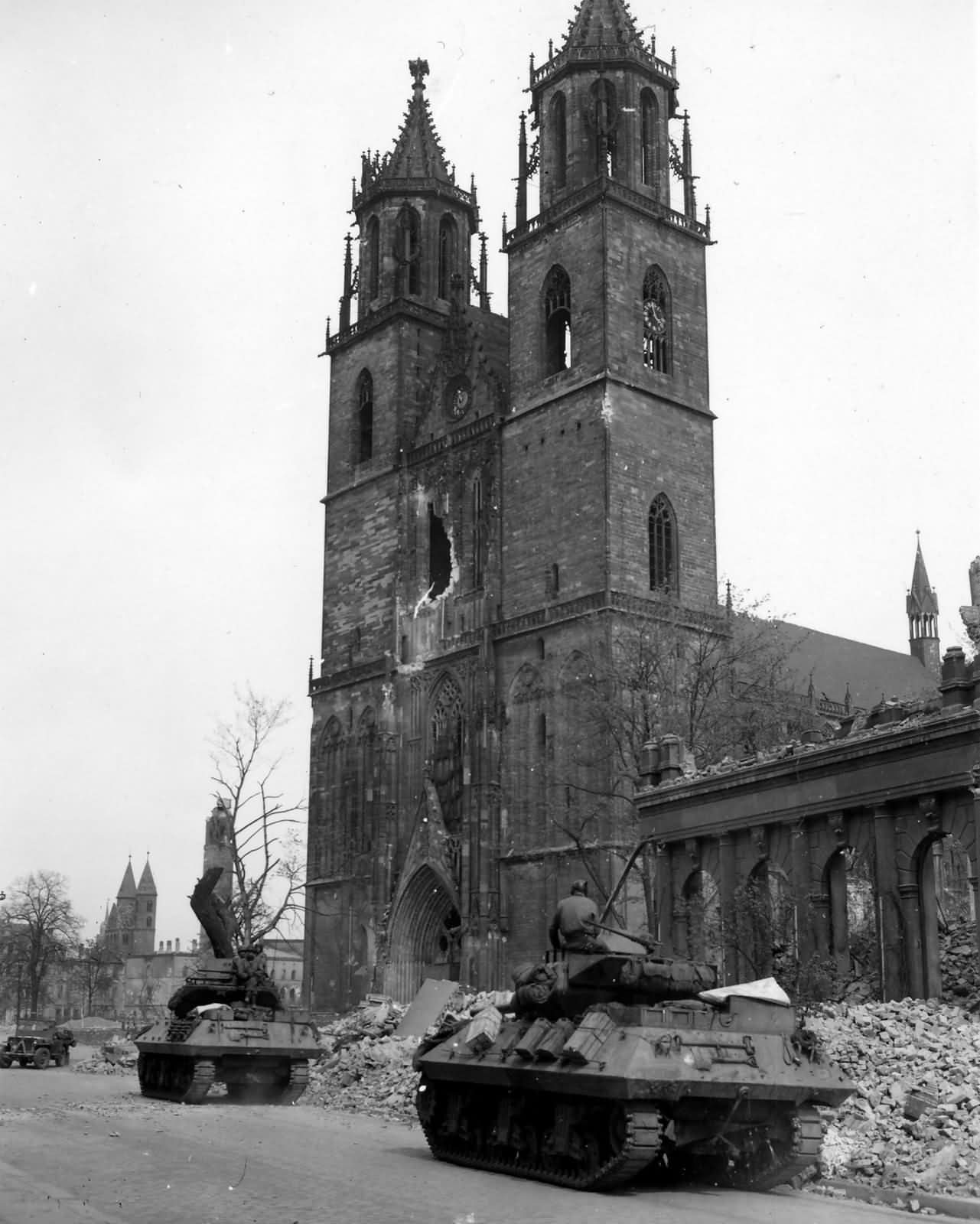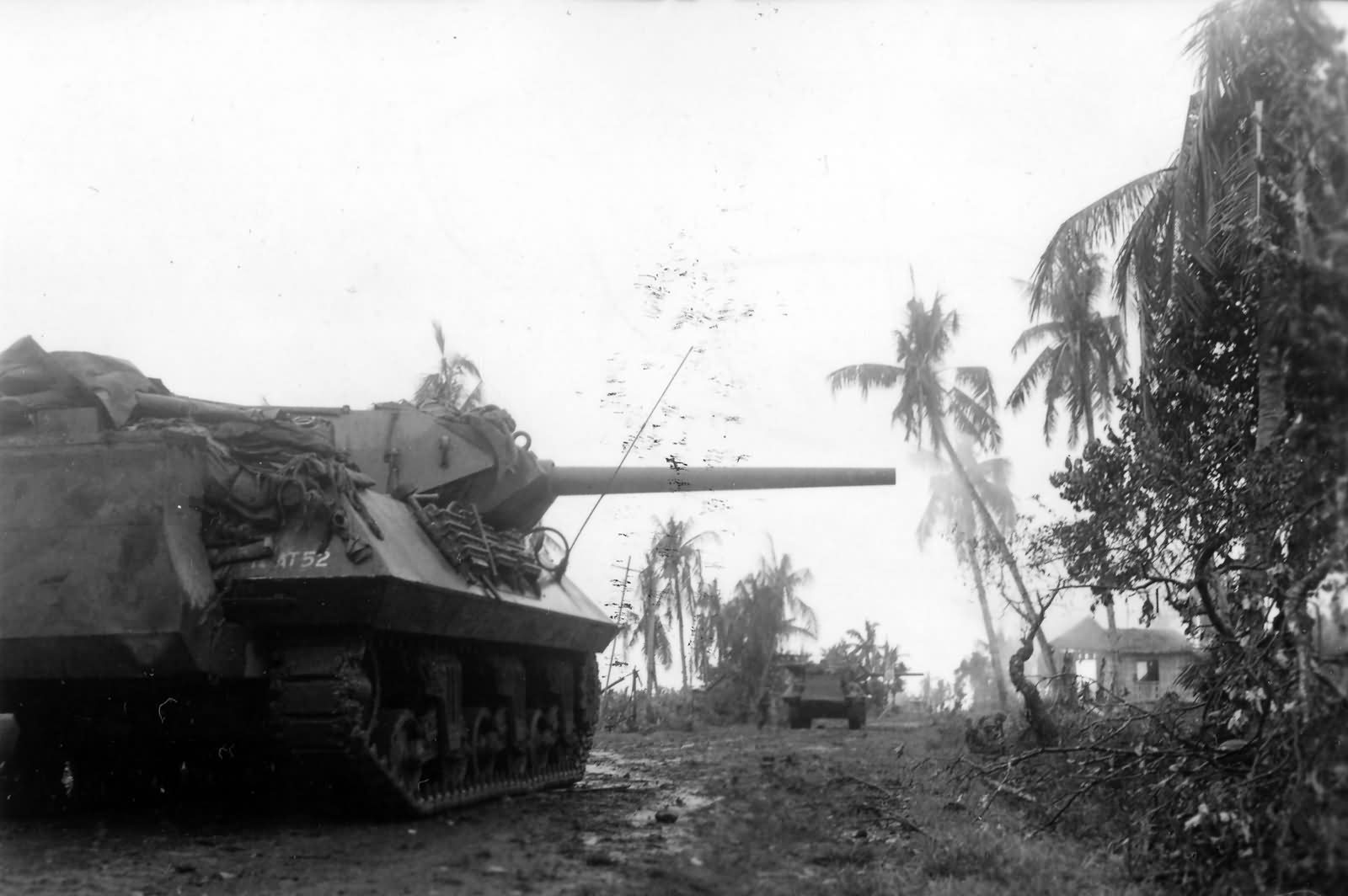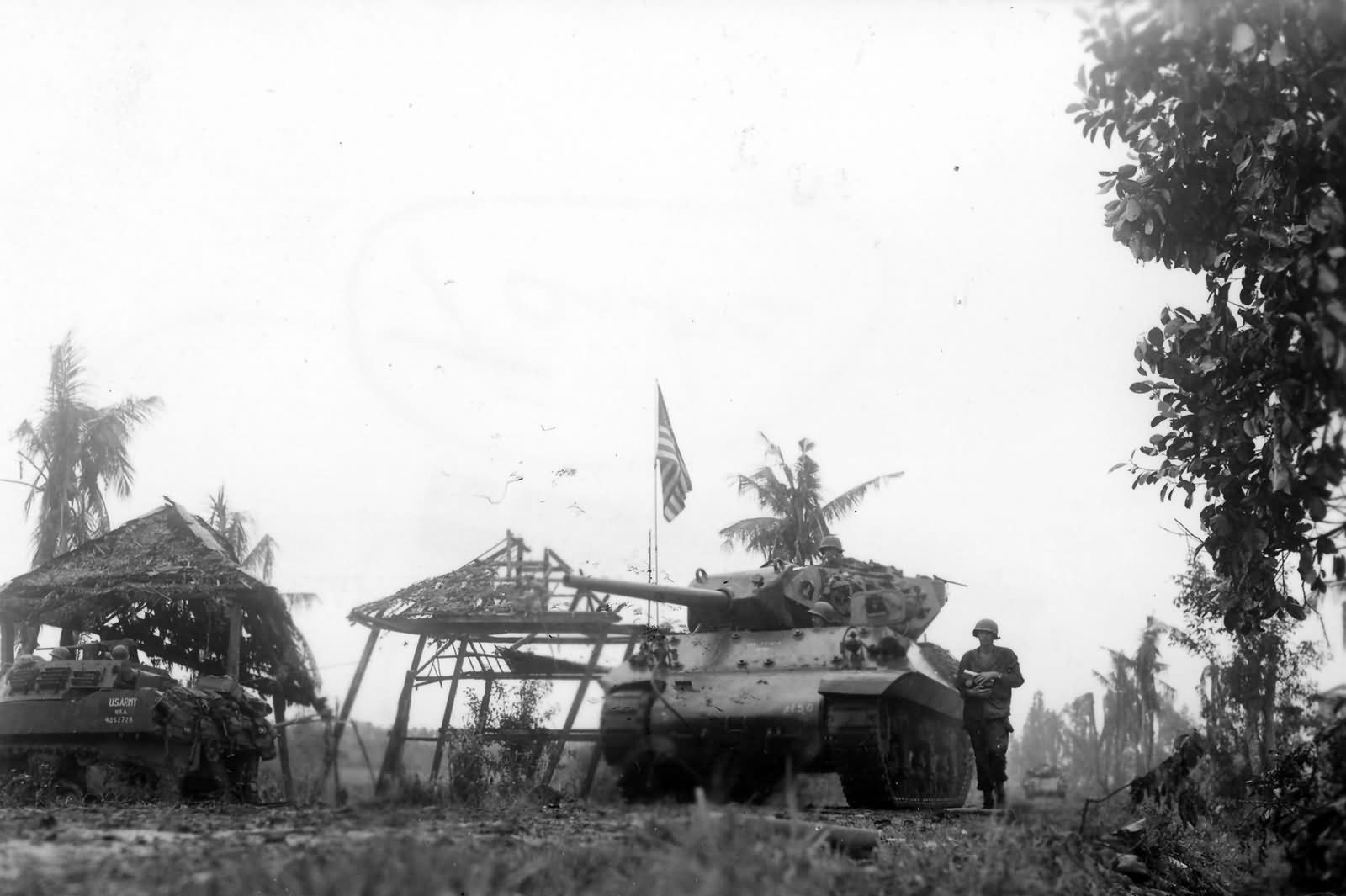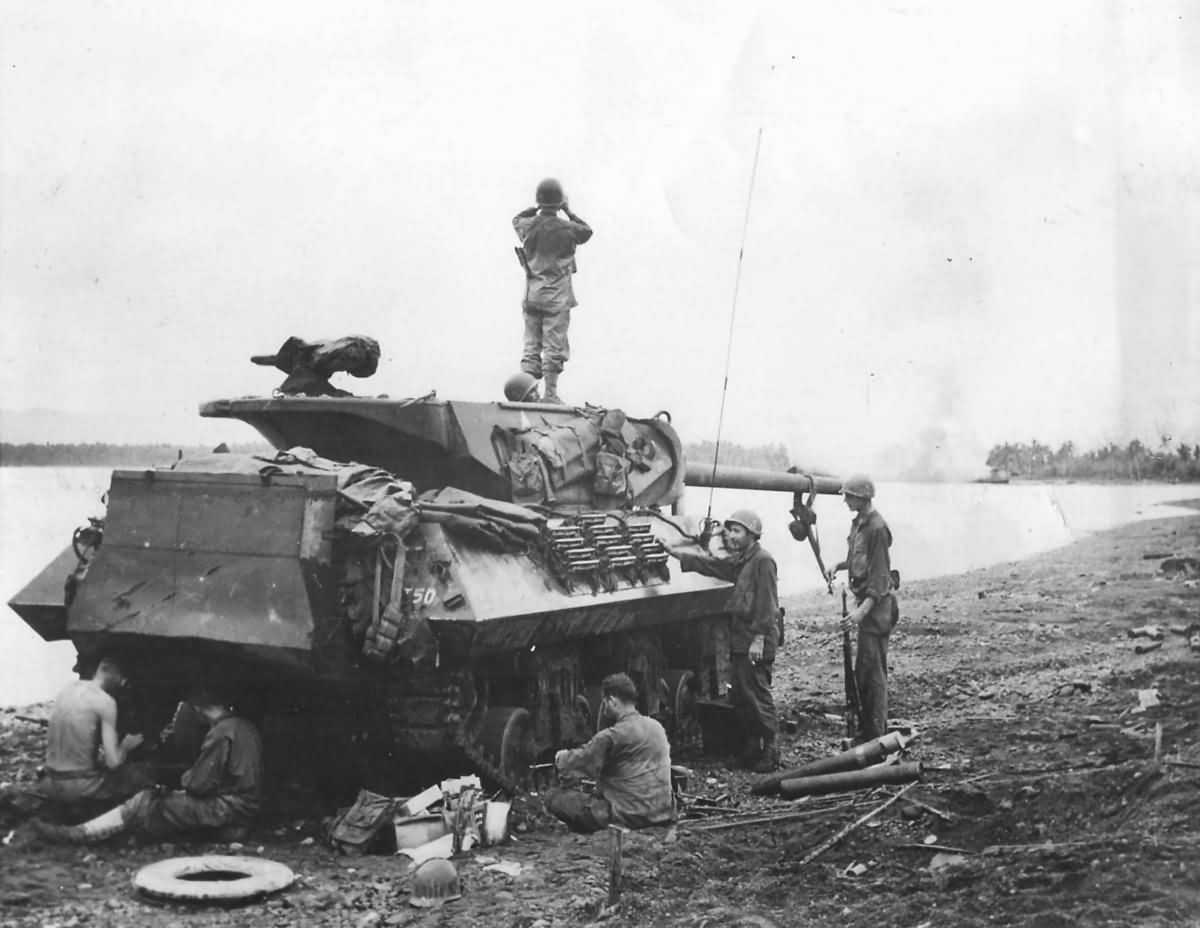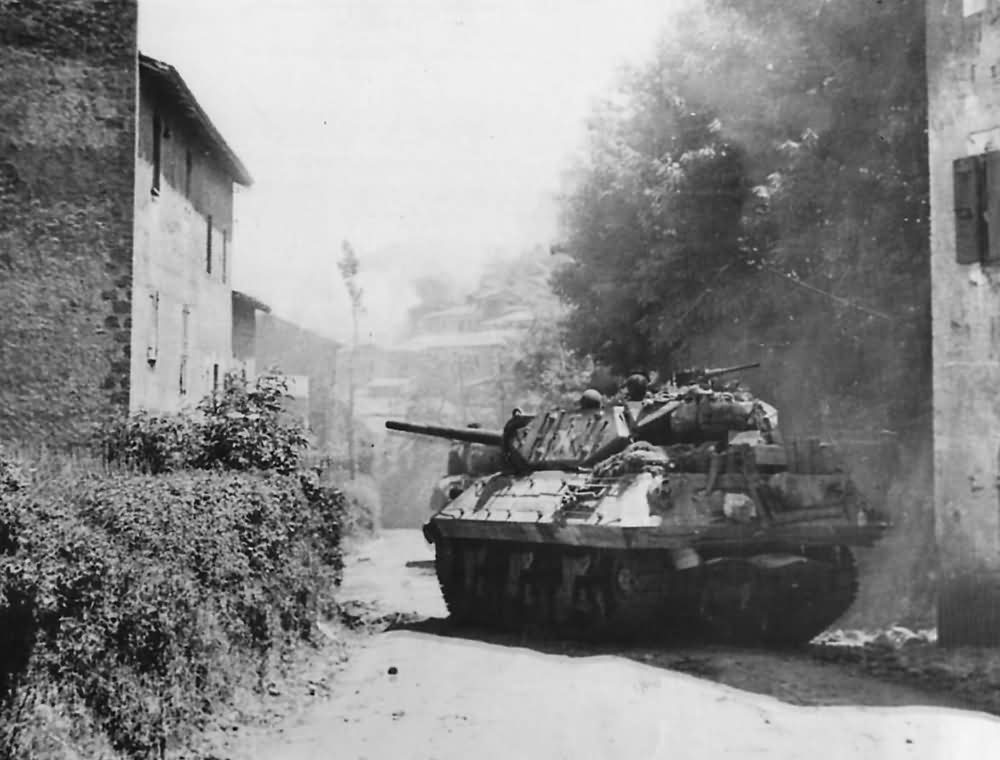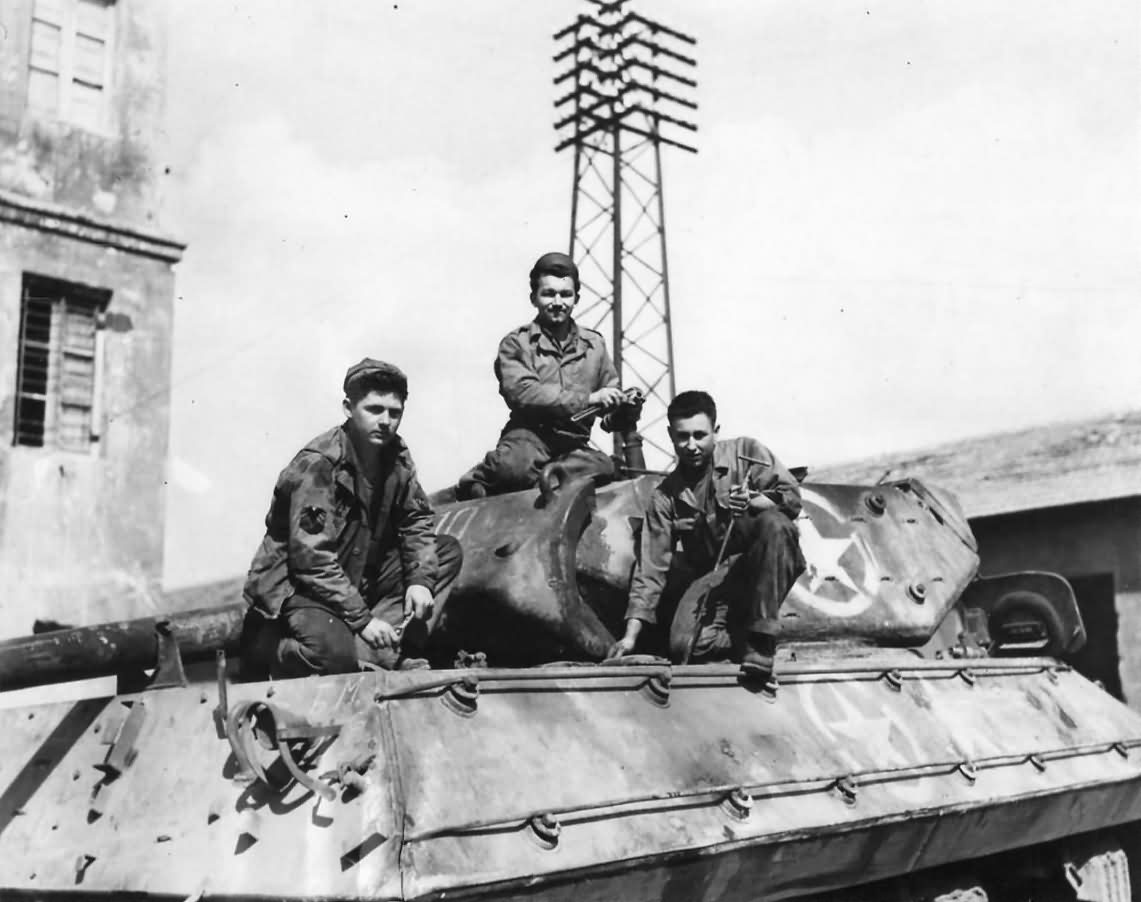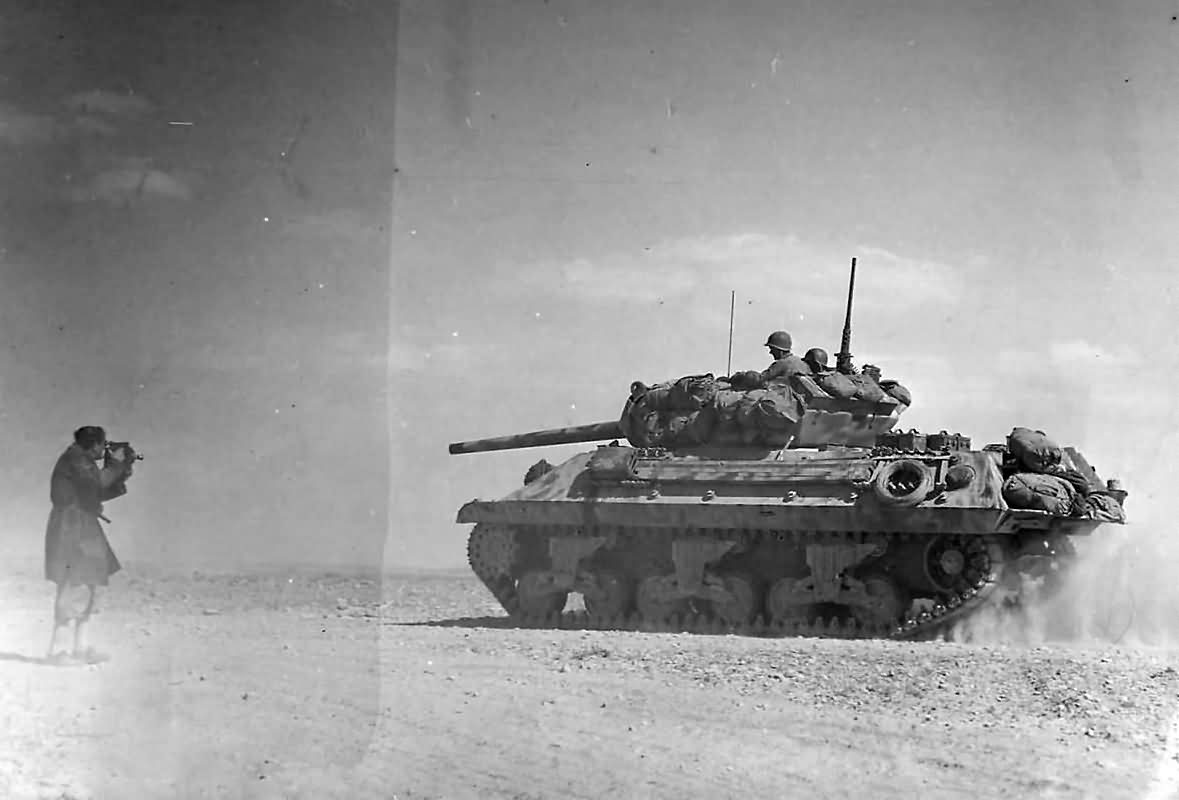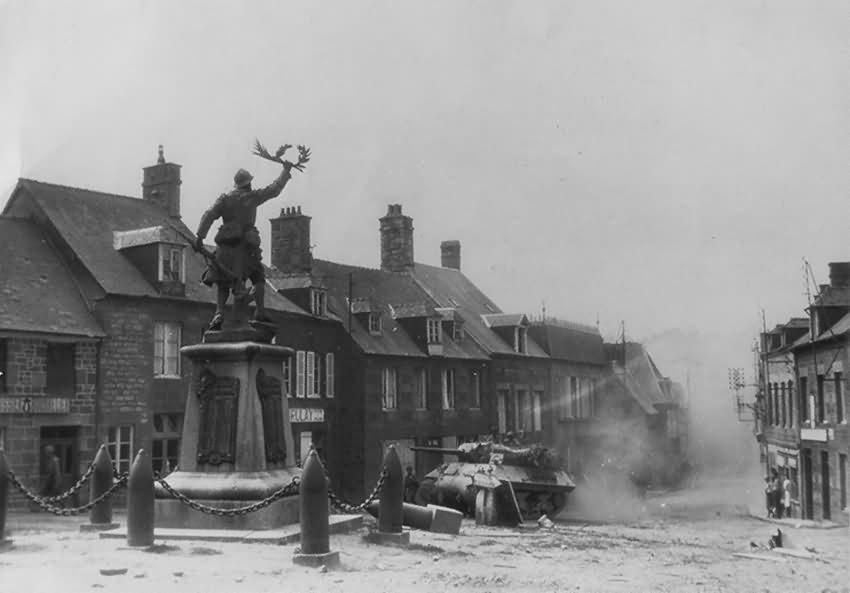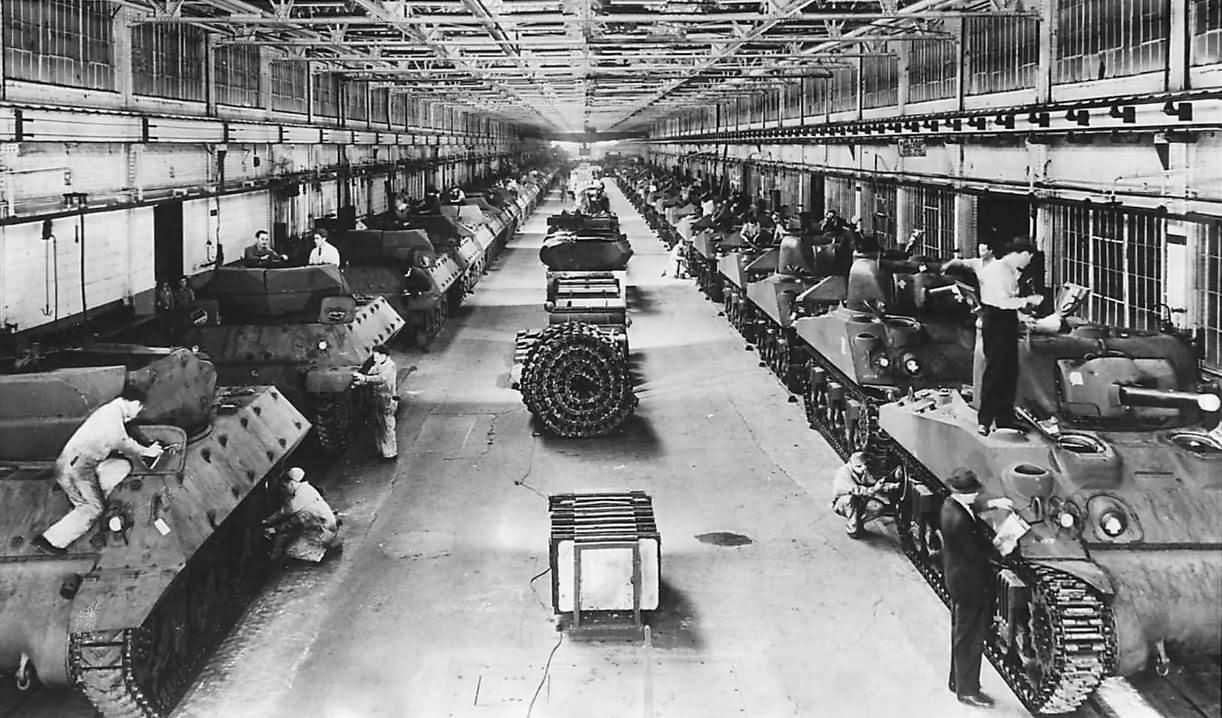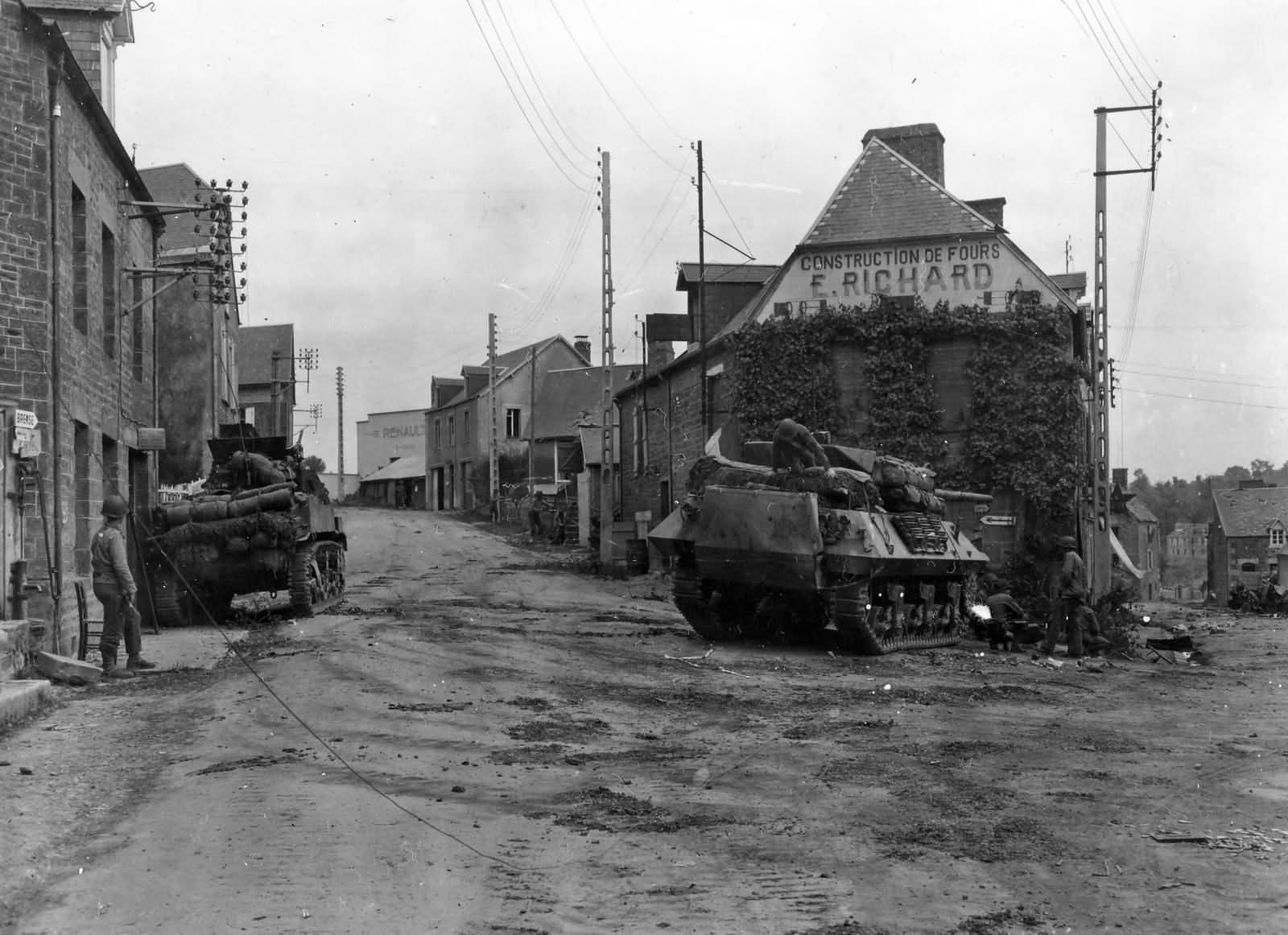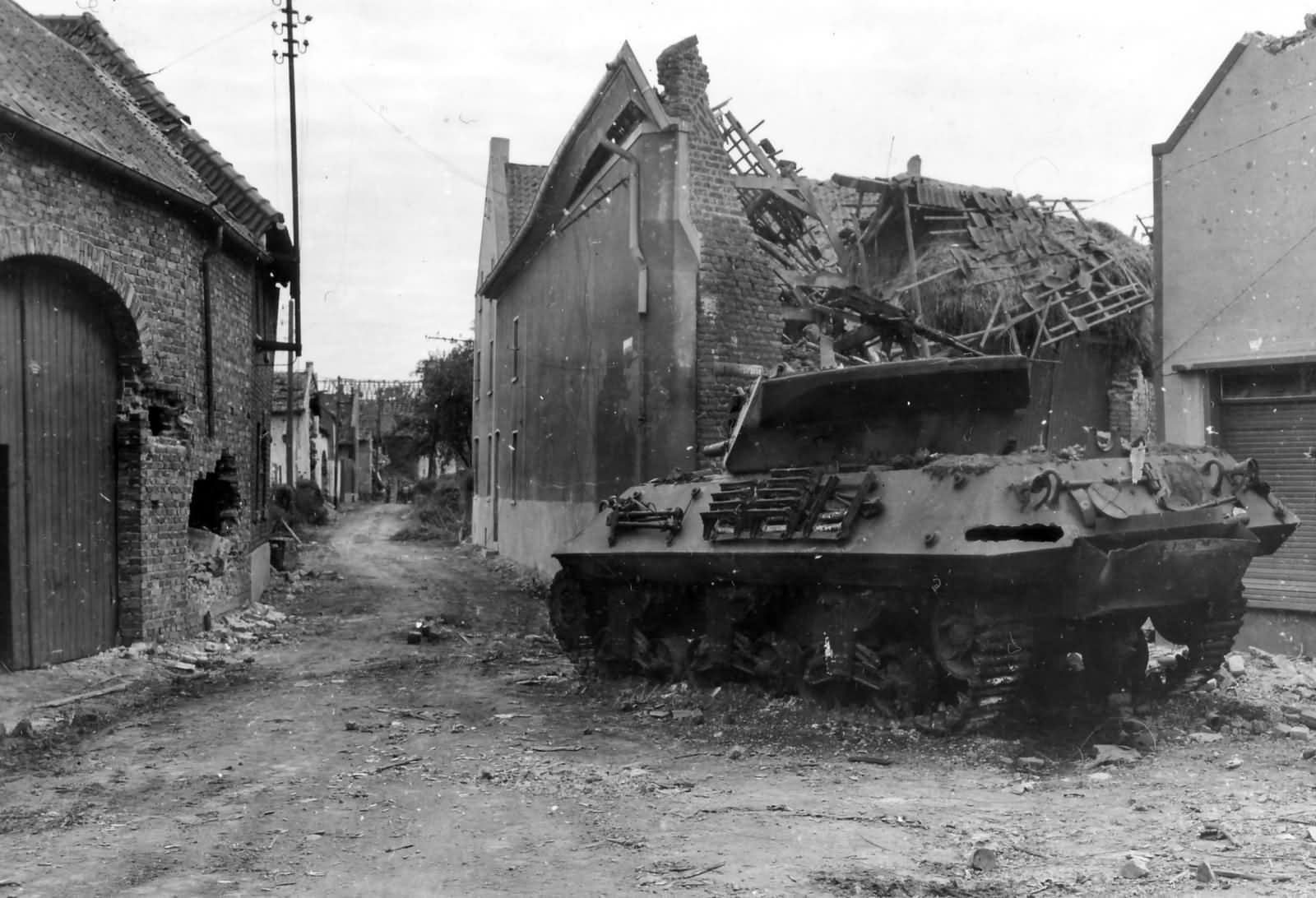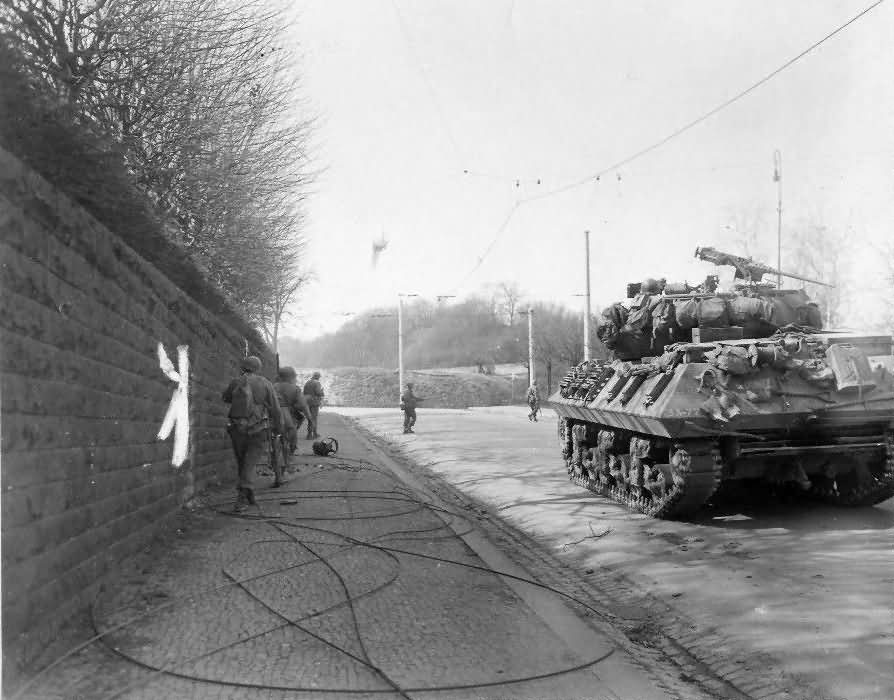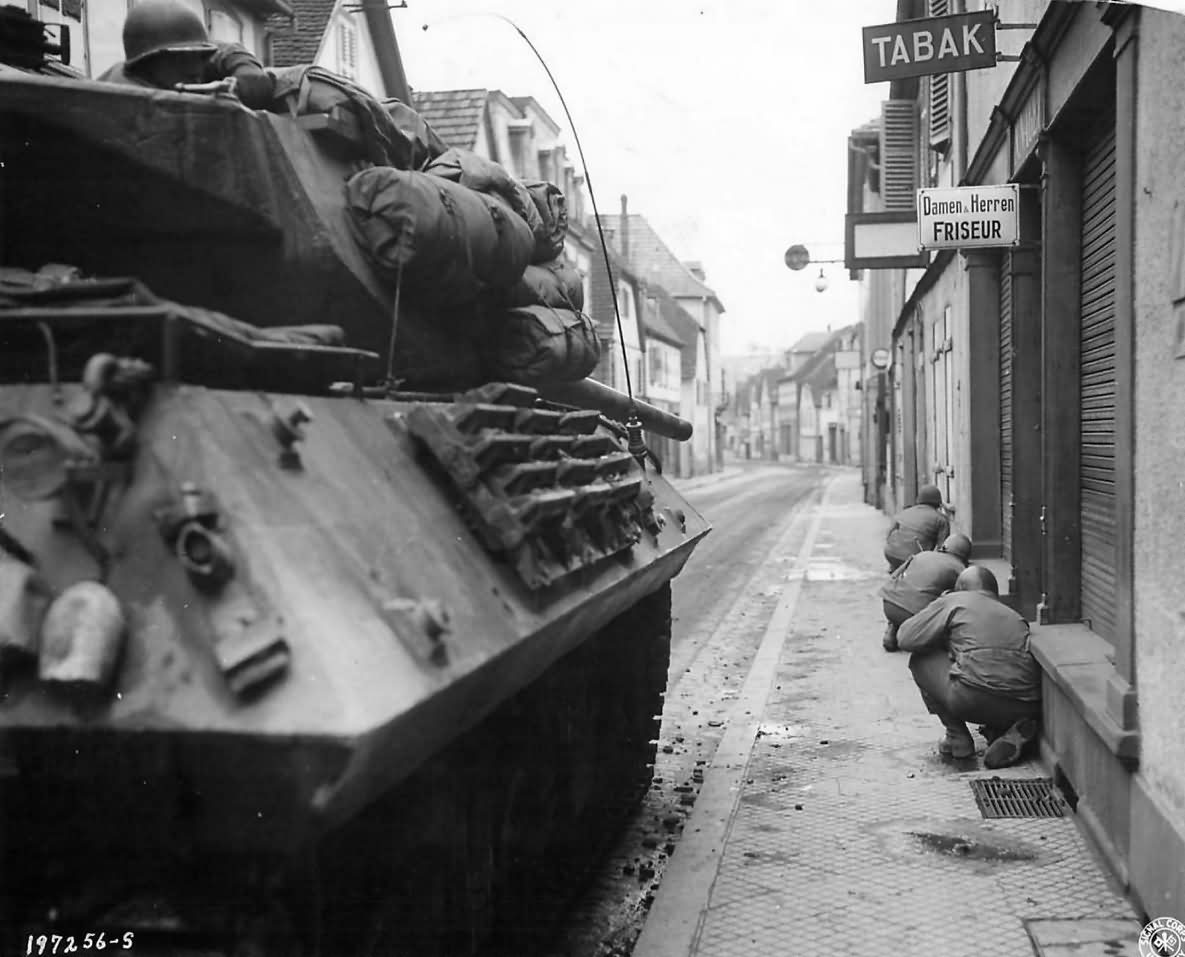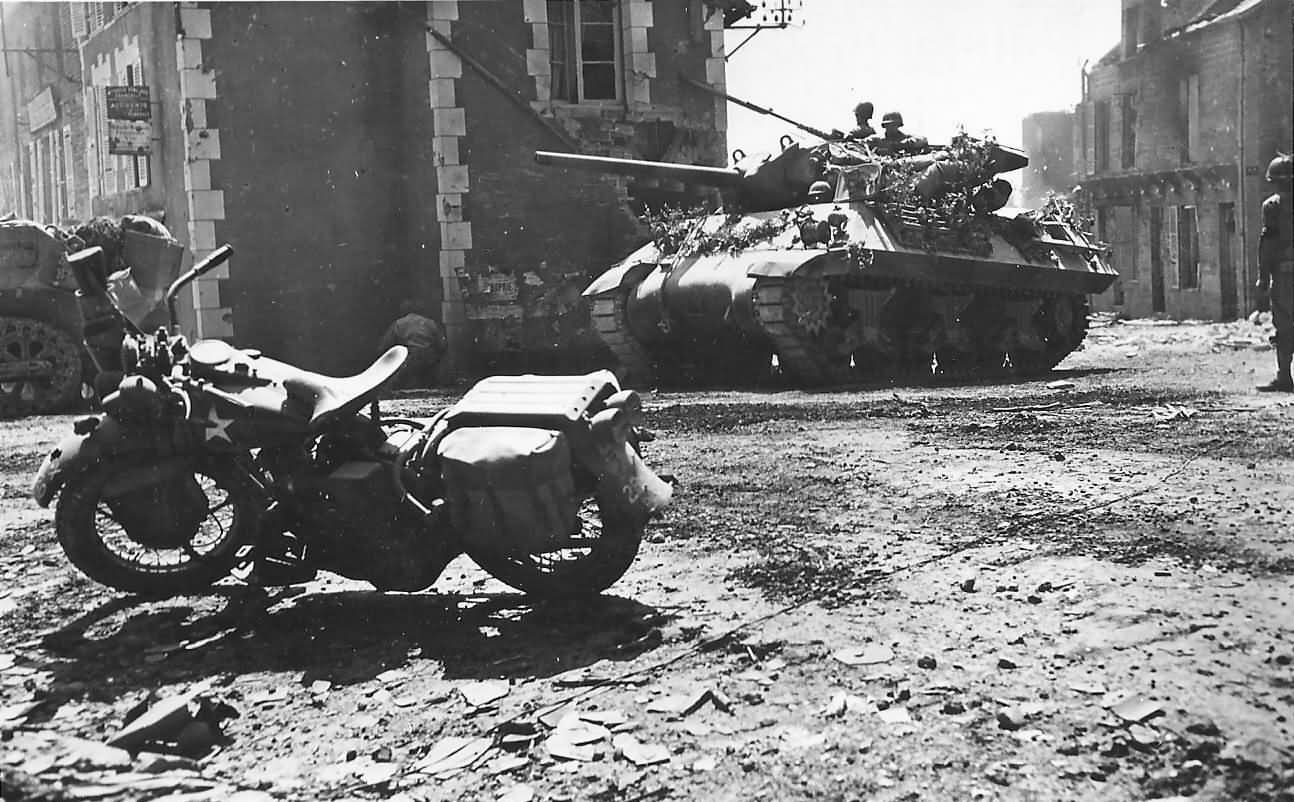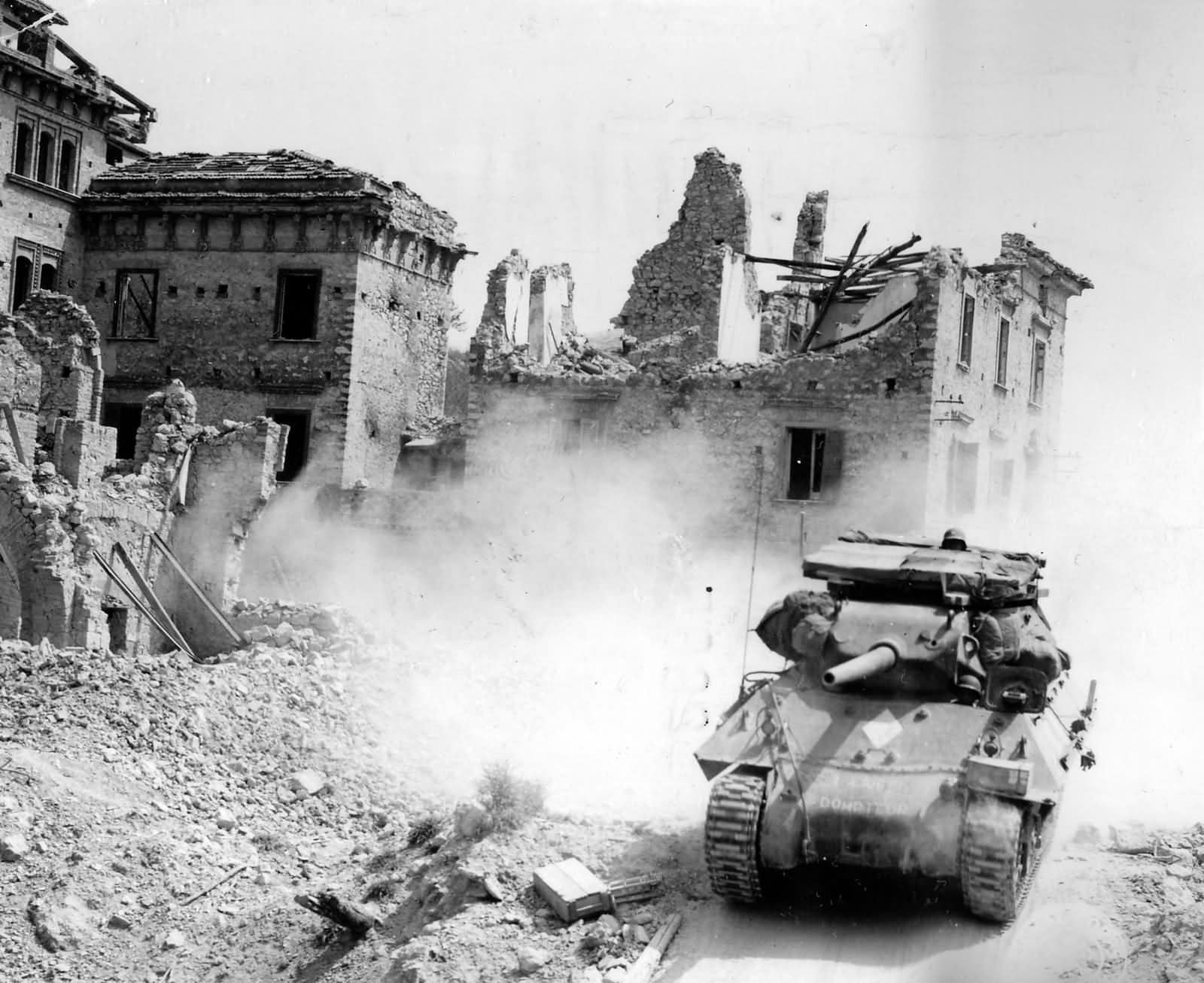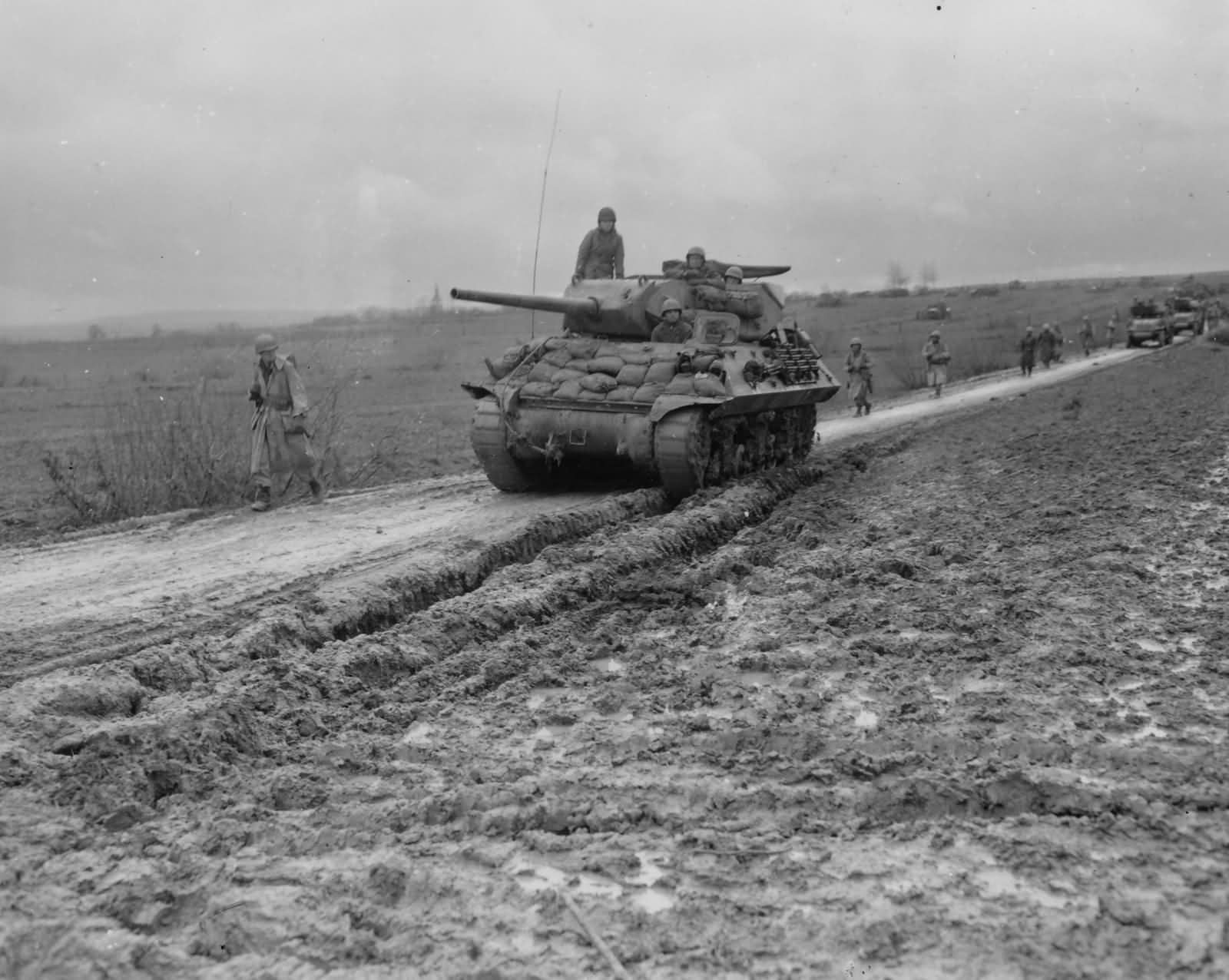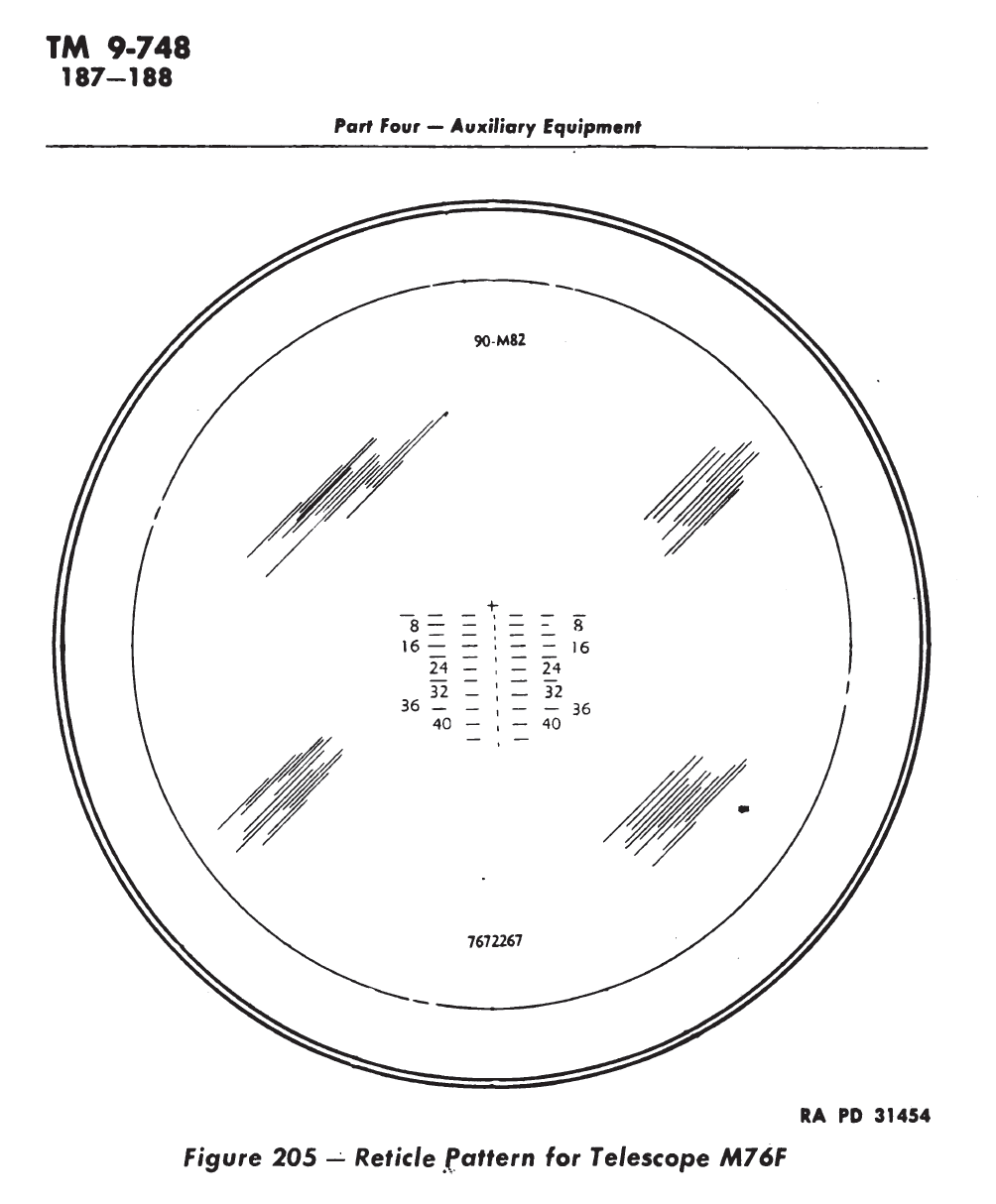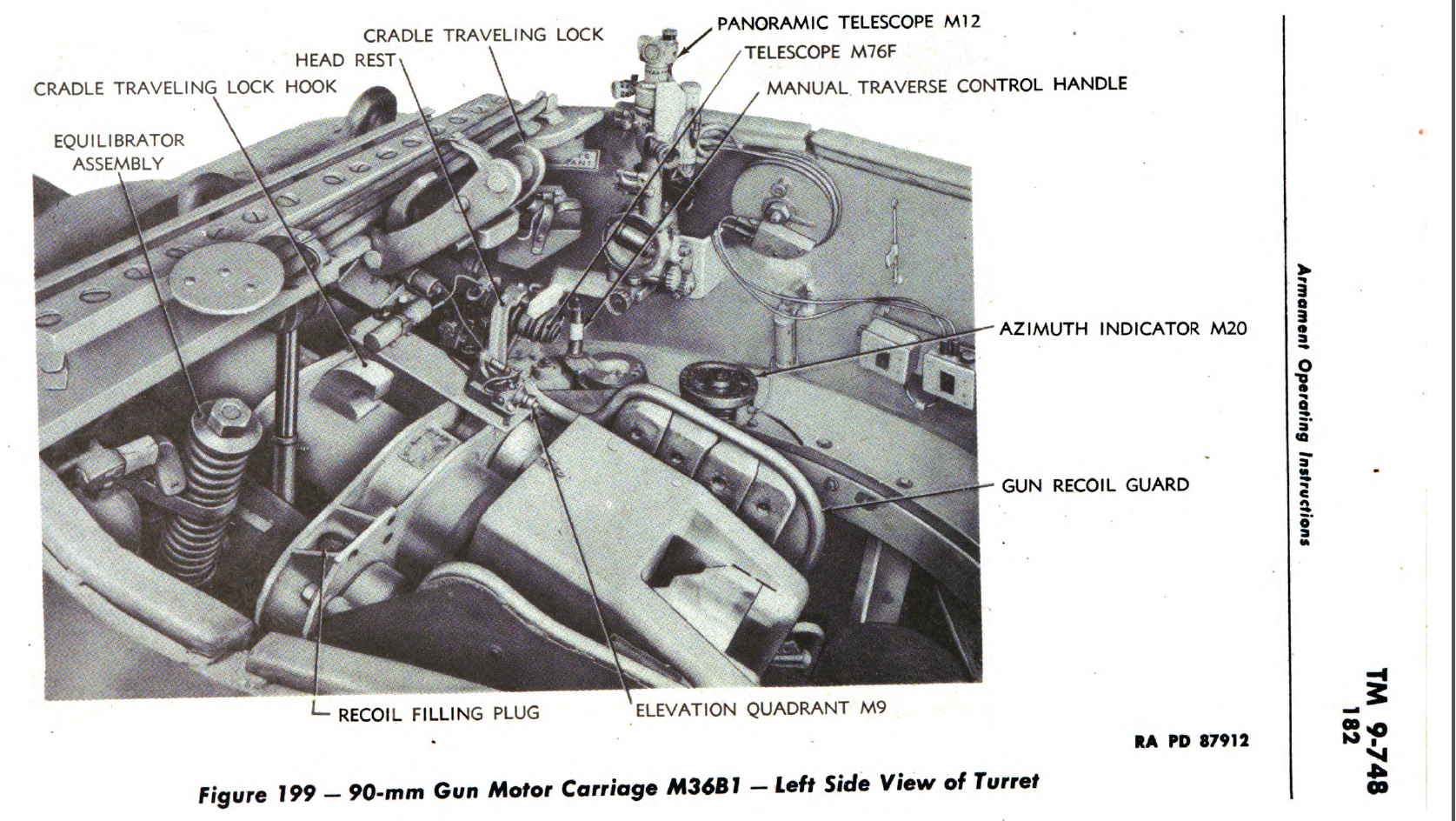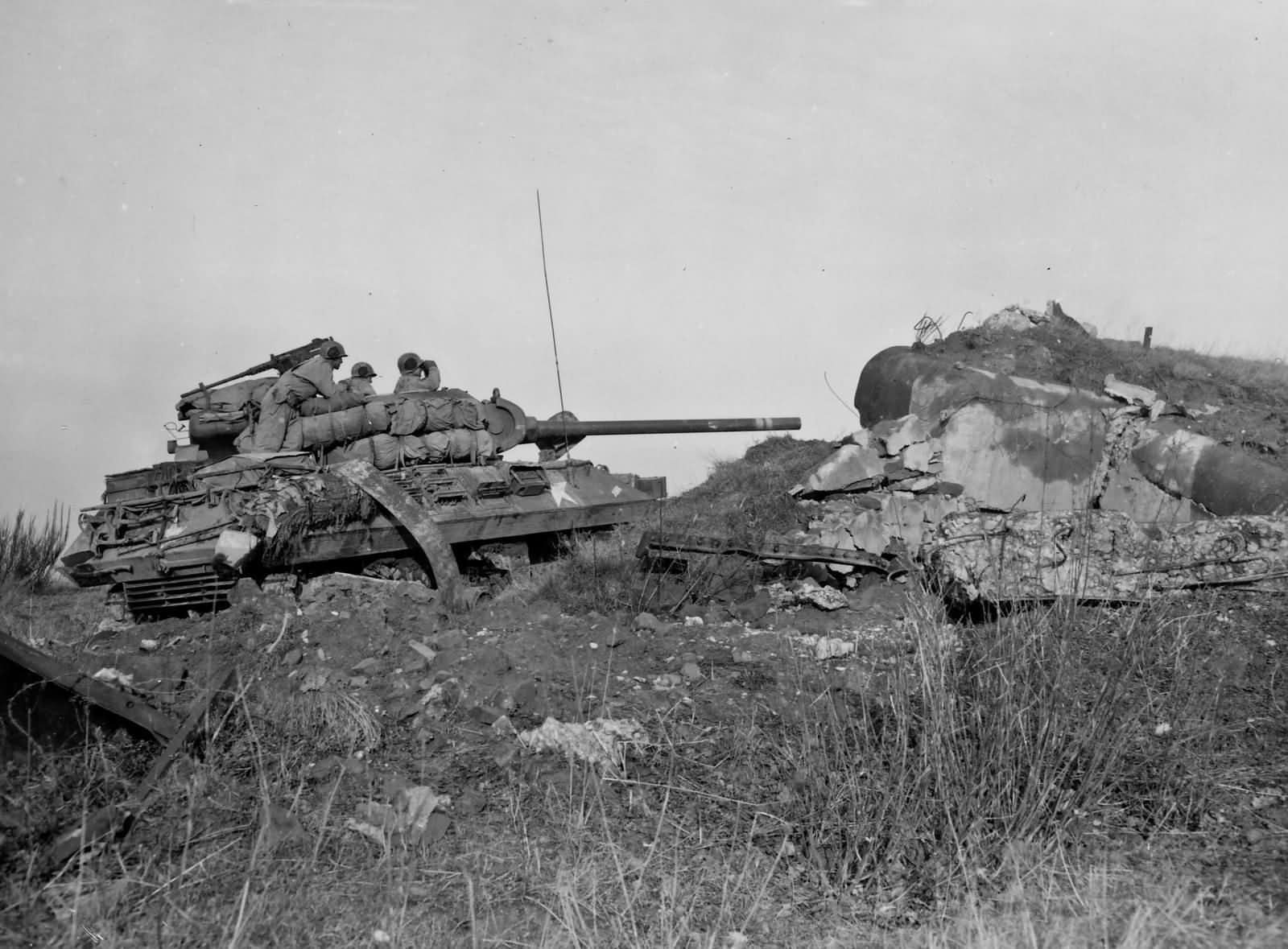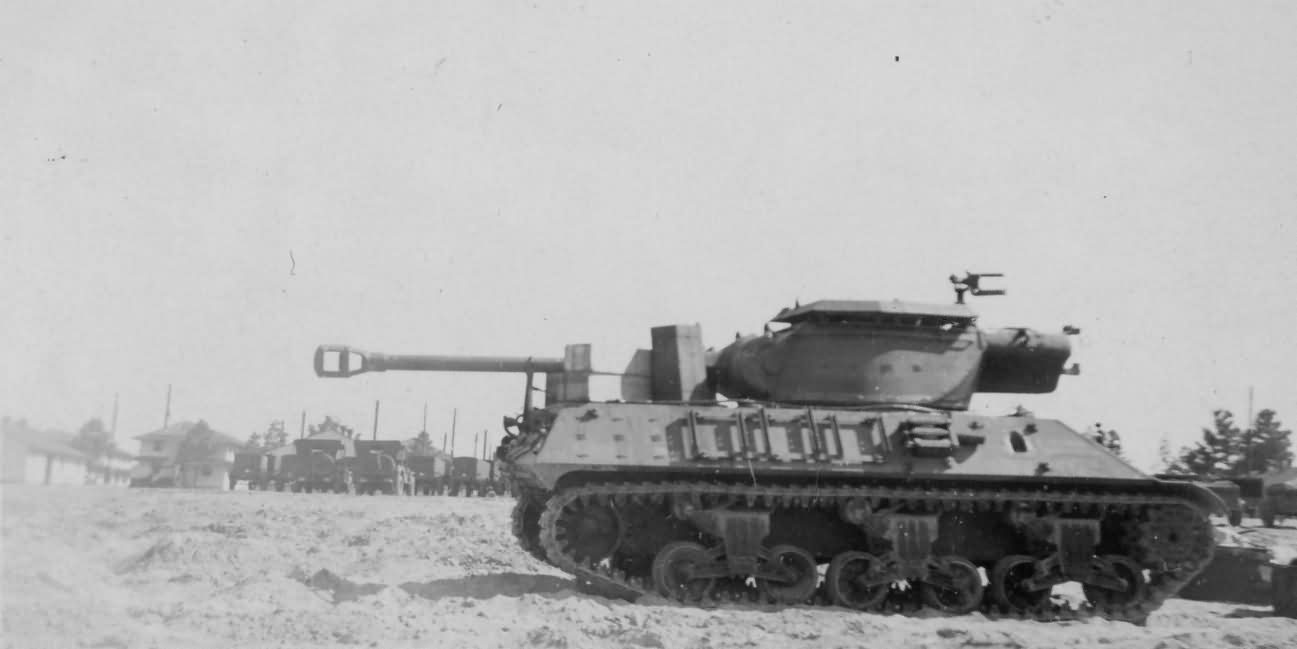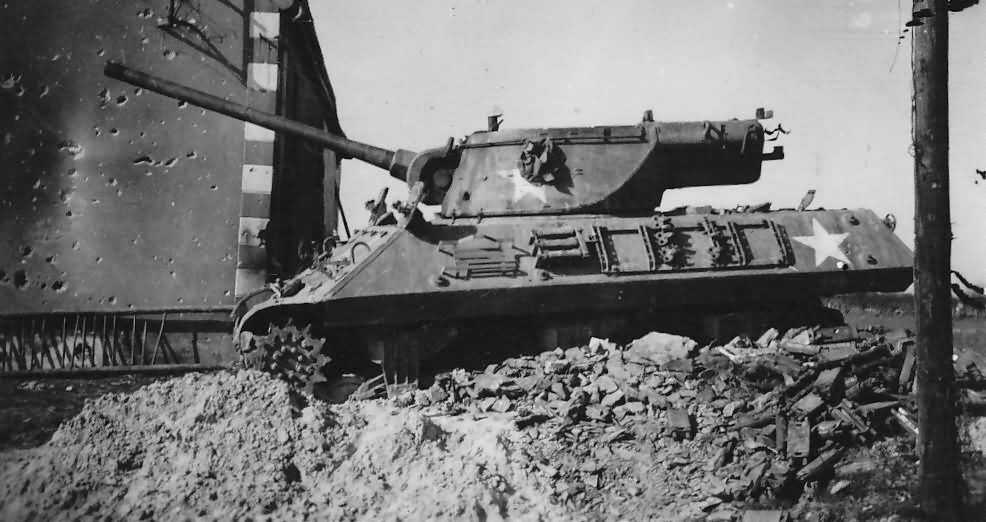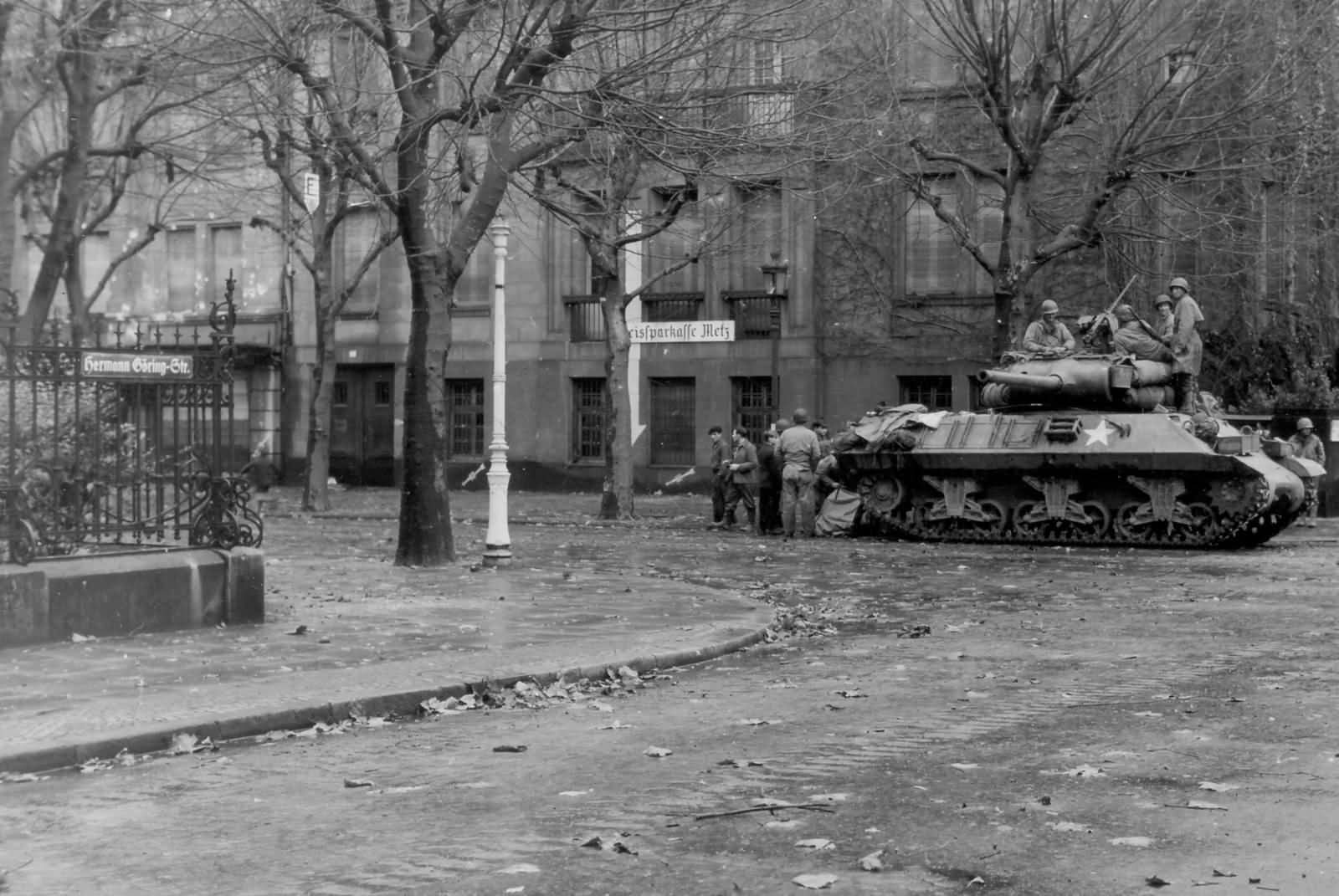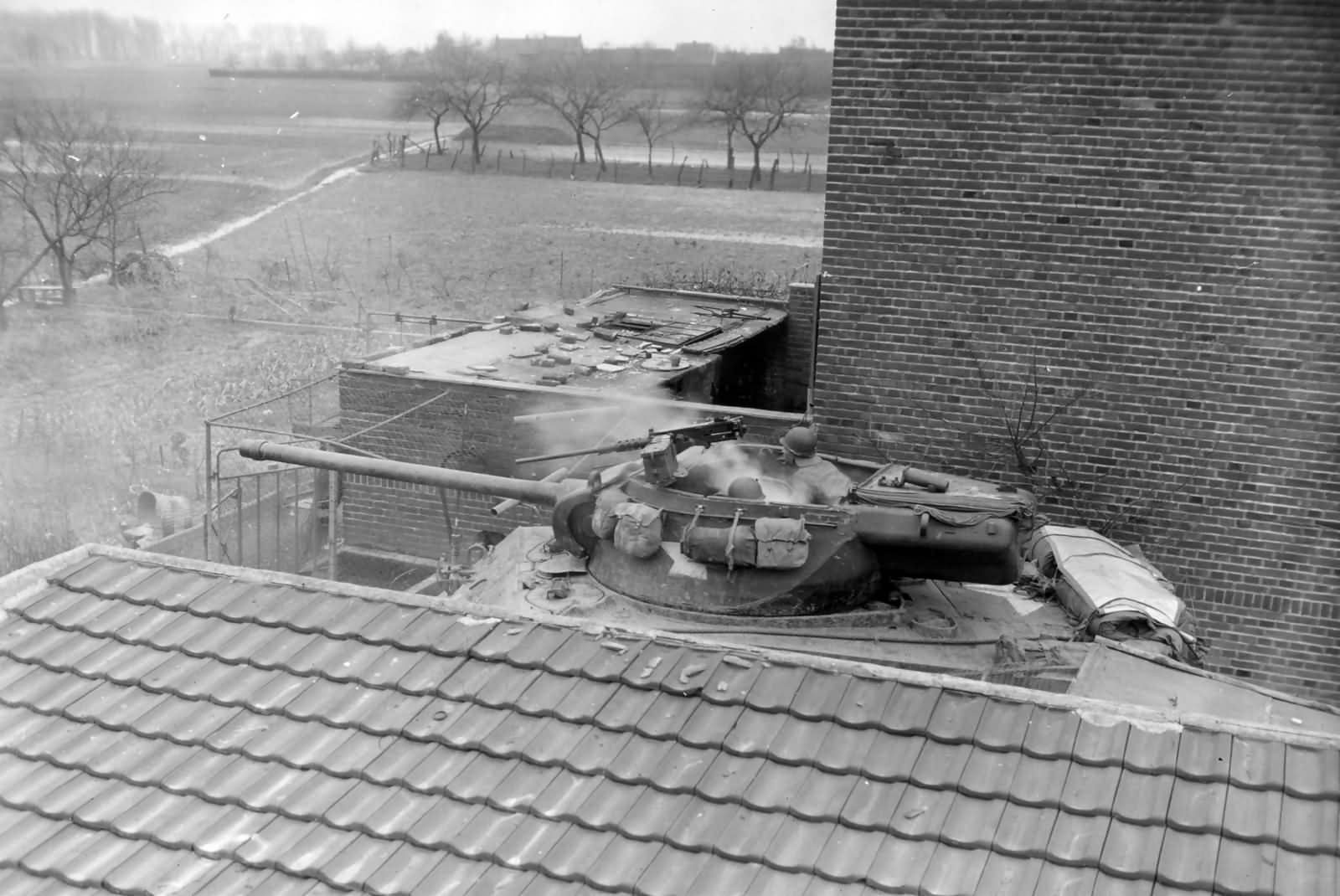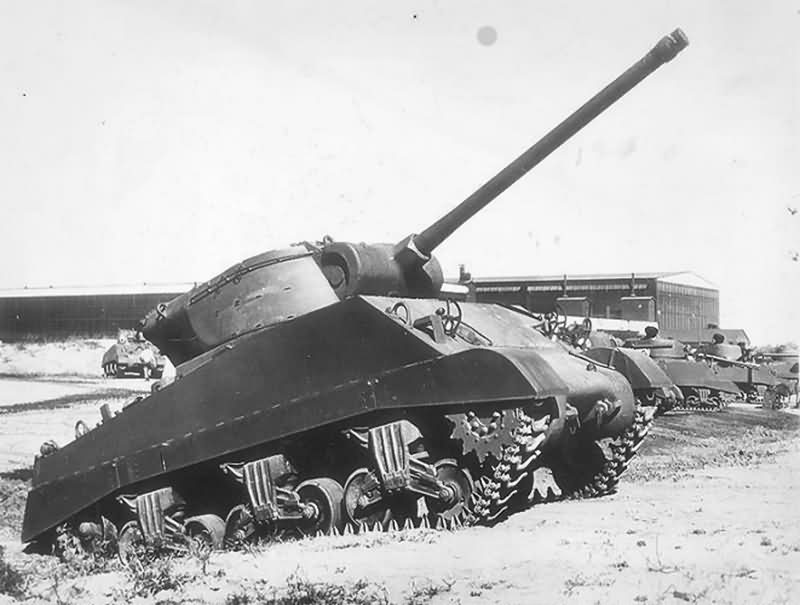Let’s Talk About The Other Things That Killed Shermans, Mines and AT guns, The True Hidden Menace.
Mines, What can we say about mines, no one likes them, but they still do a job that has to be done. We only going to cover anti-tank mines, since Anti-personnel mines do not harm tanks.

The Riegel mine 43/44.

This mine was steel cased, anti-tank mine that looked like a long rectangular box. It had 17.8 pounds of TNT explosive in it. That’s enough BOOM to really mess up a tank’s suspension. A really unlucky Sherman might have this go off right under the tank’s rear belly, where the armor was thinnest, and blow into the engine compartment and really knock the tank out. In most cases, this mine would do enough damage the tank would need battalion level repair if that tank wasn’t written off for a total rebuild.
Production on these things started in 43, and by the end of the war, they had produced over 3 million of them. Apparently, there is no safe way to disable this mine, and the recommended way of removing it is to just blow it up. There is no telling how many of these took out Shermans, but it was probably a large percentage of the Mine losses in 44/45.
The Topfmine A, B, and C.

These mines went into service in 1944. They were made from wood pulp and cardboard, with tar for waterproofing. They had a bigger charge but the metal cased mines probably worked better. These mines went into production for two reasons, they were harder for mine detectors to detect, and the case was cheap and easy to produce and used no steel. The 13-pound charge would do a lot of suspension damage.
The Tellermine 29:
This mine was developed in the early 30s and was mostly used in training but saw limited use in Normandy. 13-pound charge meant it would be effective, but its age made it primitive.
The Tellermine 35:
This mine was used for the entire war and could even be used underwater. Steel cased like the older model, this one went into production in 35. This mine had a slightly smaller 12-pound charge. Most of the time this mine would just blow a track off, and damage the suspension, but it could get lucky and do more damage.
The Tellermine 42:
This mine was an improvement on the 35 and used the same charge. It had improved anti-handling devices. This would be a very common mine through the end of the war. It went into production in 42 and was quickly superseded by the 43 models.
The Tellermine 43:

Image courtesy of the LoneSentry
A further improvement on the 42 models, cheaper to produce, with the same charge, this mine went into production, you guessed it, in 1943.
H-S mine 4672:
This shaped charge mine went into production in late 44 and was used to the end of the war. It basically was a panzerfaust head used as a mine. The mine shot the head out of the ground hoping for a belly hit. This mine would be bad news for wet ammo rack Shermans. Only 59,000 were made, making it rare. This mine was very effective even with its small 3-pound charge. The Germans felt the heads were better-used don Panzerfausts, explaining the limited production.
Panzer Stab 43:
This mine was very much like the 4672 mines but didn’t launch the projectile. This mine was even rarer and was discontinued, probably because it worked, by the Germans the same year it went into production. Around 25k got made before they killed it.
♠♠♠
That’s a lot of mines and that’s just the mines the Germans made, I’m sure they used any stocks of captured mines they got their thieving paws on. So I’ll add Russian, British, and US AT mines here soon too. Mines always accounted for 10 to 30% of tank losses depending on the year, month, and theater you look at the losses in. There are a few pictures of Sherman tank catastrophically blown up, with the whole upper hull ripped away. They are labeled as mine damaged, and in a few cases, the labeling mentions two mines being put into the same hole, I think the ones labeled ‘mine damage’ probably lost the part about two mines in the hole to time. I suspect those photos of blown-up Shermans are cases of two or more mines in one hole or an even bigger explosive like a dud Arty shell, or aircraft bomb could be put in the hole too.
Tankers probably really hated mines, in many cases minefields would be covered by well-hidden AT gun positions or even tanks, and in this role, the Panther was a pretty good tank, since it didn’t need to move much. Hitting a mine in an ambush like that could be very deadly for the crew when they bailed out to look at the damage or retreat to the rear. The random leftover mine, or stumbling into a minefield not covered by AT guns would be a big inconvenience but rarely resulted in a fully destroyed tank or lost crew members.
AT guns, cheap and easy to produce, these guns were a big threat to tanks but had little value to a mobile force.
AT guns were just what they sound like, large, Anti-Tank guns, on towable mounts. Most were as small and low slung as possible. Unless it was a US 3 inch AT gun, then they are huge. Even guns normally not a huge threat to a Sherman like the PAK 38 50mm AT gun could punch through the Shermans side if it was hidden well enough for the Shermans to give them the shot. All the larger PAK guns had no trouble punching right through most Shermans. Guns set up in ambush would have pre-range cards, giving them an advantage in shooting and getting hits. They are much easier to hide than a tank and can even have bunkers built around them. Those are all reasons why these things made Sherman tanker’s lives harder.
Towed AT guns have a lot of negatives. For one, they are towed, by trucks, or halftracks, they have to be limbered and unlimbered, or set up or packed up to go. This is very hard to do in a useful way if you’re attacking with a mechanized force. By the time the guns are set up, if done at safe distances, the battle has moved on. At guns only have a small lightly armored shield, the crews would have to rely on personal foxholes or larger trench works if they had time. The more time it had to get in place and camouflaged the position the better things would be for the gun and crew. But unless they had fortifications with overhead cover for the gun and crew, making it effectively a fixed gun, any kind of indirect fire weapon is going to make their lives hard. If the artillery fire wasn’t killing the crew, it would at least be keeping it from firing.
About half of the US tank destroyer battalions used only towed anti-tank guns. The battalions were not very successful, even during German offensives like the Battle of the Bulge. Both tracked TD battalions and towed were quickly disbanded after WWII, and towed anti-tank guns would not be a big part of most western nation’s militaries after the war either. AT guns would prove very useful to the Germans from mid-war on after they were losing. They had a lot of these guns, and they accounted for a lot of tank kills. It was hard to determine in many cases what type of gun killed a tank, but tanks were much rarer than AT guns.
The Sherman 75mm tanks were actually better at dealing with AT guns than the later model tanks that had the 76mm gun since it had a smaller explosive charge. It was far from useless though. A tank’s best way of dealing with an AT gun was to shoot the hell out of it with all guns available once it was spotted, and sometimes if the crew was suppressed, they’d even get a dose of the tracks.
Pak 38 50mm AT Gun:
This little gun was the main German AT gun from 1941 until superseded by the Pak 40. It was still used until the end of the war. The Germans were so desperate they couldn’t afford to retire any weapons. Crewed by five men, it could be moved around pretty handily by the crew but required a light truck or some kind of tow vehicle to go any real distance. I won’t go into great detail about the gun but it needed to be very close to a Sherman to knock it out from the front, not so much from the sides. Nearly 10,000 produced.
Pak 40 75mm AT Gun:
This gun was larger; almost double the weight of the Pak 38. This gun could also take the Sherman out at the combat ranges they normally faced each other. The Germans made nearly 20,000 of these guns, so they are probably responsible for a lot of knocked out Shermans. In some cases, the same type of gun may have knocked the same Sherman out multiple times. This gun required a bigger truck or halftrack to haul, but overall, it was a great gun.
Pak 43 88mm AT Gun:
This ‘fearsome’ gun had the same PR people as the big cats, but at least, in this case, the gun performed well, though not to the mythical levels some would have you believe. No it can’t take out an M1 ‘Abrahams’, it could take out any allied tank it faced, but it was nearly as rare as the Tiger I&II. They only produced around 2000 of these guns, so they only outnumber the combined Tigers production number of 1839, by a small margin. Overkill for most of the combat it saw, it would have been more useful if the Allies had made the same mistake of wasting resources on heavy tanks, but since they didn’t, this gun was almost entirely a waste of time. The gun weighed almost 10,000 pounds, and it was an awkward, gun mount, even worse than the US 76 AT gun mount. It needed a very large tow vehicle and its size and weight limited where it could be employed.
Flak 18/36/37 88mm dual-purpose AA/AT Guns.
Another ‘mythical’ German weapon, this one started life as a mediocre AA gun that was pressed into use as a direct fire weapon when needed. As a direct fire weapon, it was pretty good, these larger and much more powerful guns were better at penning armor than anything being mounted on a tank before or at the beginning of the war. Capable of destroying all the French and British tanks the Germans faced, this gun could even handle the T-34 and KV-1/2 tanks, and it was the only thing the Germans had in any real numbers that could. This led to it being mounted in the Tiger I. The Pak 43 was more powerful, but this gun was more numerous with over 20,000 being produced. If any allied troops were right when they thought an 88 was shooting at them it would be one of these.
There was a Flak 41 88mm, but it was a failed attempt to improve upon the 18/36/37 failings as an AA gun. The reason the basic 88 Flak gun failed as an AA gun was that it had optical range finding, and couldn’t lob a shell high enough to hit US heavy bombers, even the older models like the B-17. They also lacked radar ranging or laying, unlike the superior US M1/2/3 90mm AA gun system. Had these guns not found their nitch in the direct fire role they would have gone down in history as the mediocre AA guns they were.
Next up, Panzerfausts, or AT-sticks as I now call them.
Sources: Armored Thunderbolt by Zaloga, Yeide’s The Tank Killers, The Infantries Armor, and Steel Victory, Sherman by Hunnicutt, Combat Lessons, The Rank and file, what they do and how they are doing it 1-7, and 9 WWII Armor, Ballistics and Gunnery by Bird and Livingston, TM4 Sherman tank at war by Green, Tanks are a Might Fine Thing by Stout, the Lone Sentry, TM9-1940 Land mines, TME9-369A German 88MM AA Gun, TME30-451 Handbook on German Armed Forces 1945, DOA Army Battle Casualties and Non-Battle Deaths in WWII, FKSM 17-3-2 Armor in Battle, Another River, another town by Irwin, Wargaming’s Operation Think Tank Videos .



